If the leaks and rumours are to be believed, SRAM looks set to update its flagship Red eTap AXS groupset this year.
With Shimano and Campagnolo both having updated their top-level road bike groupsets – Dura-Ace Di2 R9200 and Super Record Wireless, respectively – recently, SRAM surely hasn’t been resting on its laurels.
That said, despite having launched nearly four years ago, the current SRAM Red eTap AXS groupset remains one of the top-performing groupsets available.
It’s competitively light, offers excellent shifting and braking, and its mix of carbon and polished alloy components still looks great.
Nothing’s perfect, though, and there are some gripes that – as things stand – lead me to marginally favour Shimano’s flagship groupset over SRAM’s (I’ve not had the pleasure of using Campagnolo’s latest offering yet).
With that in mind, here are the seven things I want to see from a new SRAM Red AXS groupset.
Updated shifter ergonomics
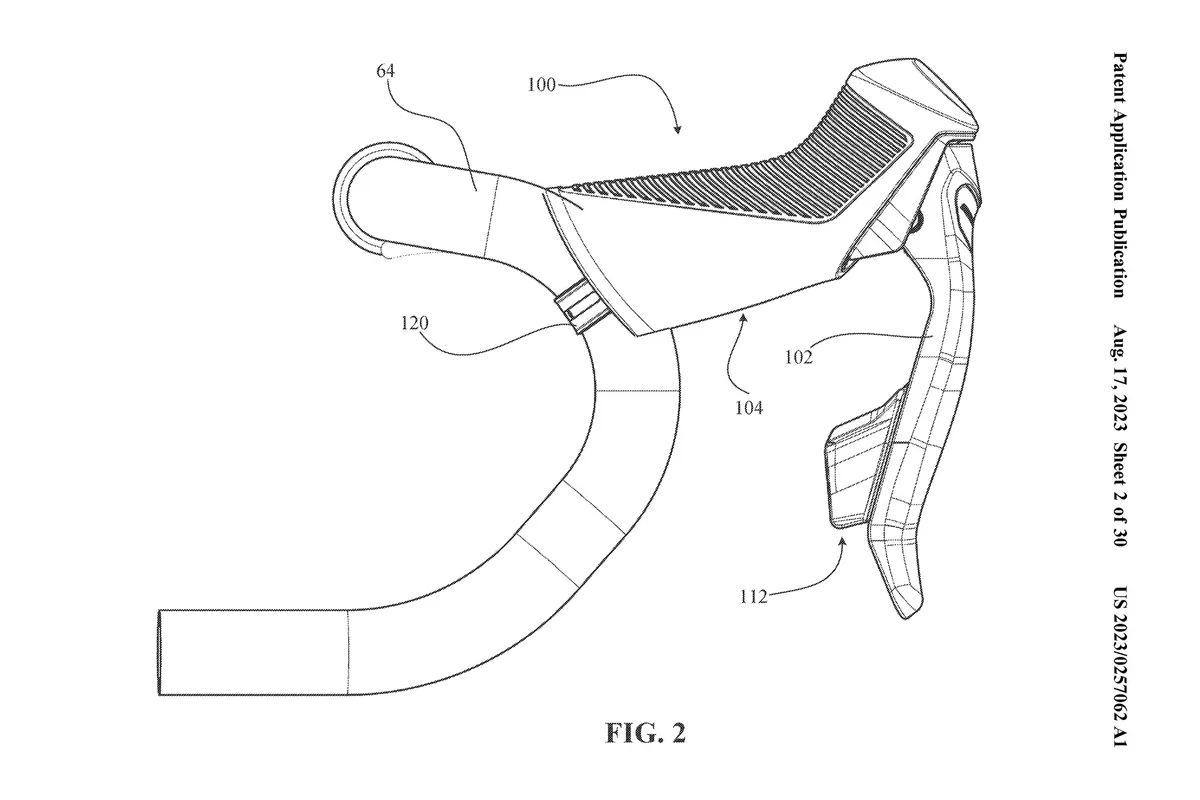
While SRAM’s current Red shifters are fine, Shimano’s latest 12-speed Di2 shifters set the current standard for ergonomics.
The slim and slightly angled-in hoods feel ‘just right’ in the hands of so many testers (myself included), whereas the current SRAM Red eTap AXS shifters can feel a little bulky and unrefined.
Fortunately, though, a new hood shape seems all but confirmed already.

A patent for a new SRAM shift and brake lever design leaked late last year, meaning the prototype shifters we’d seen Movistar Team riders trialling at a training camp way back in December 2022 look set to be part of any potential new groupset.
The patent drawings and spy shots show a set of shifters that bear a slimmer overall form and a strong resemblance to Shimano’s excellent 11-speed GRX Di2 electronic shifters – both of which should represent improvements.
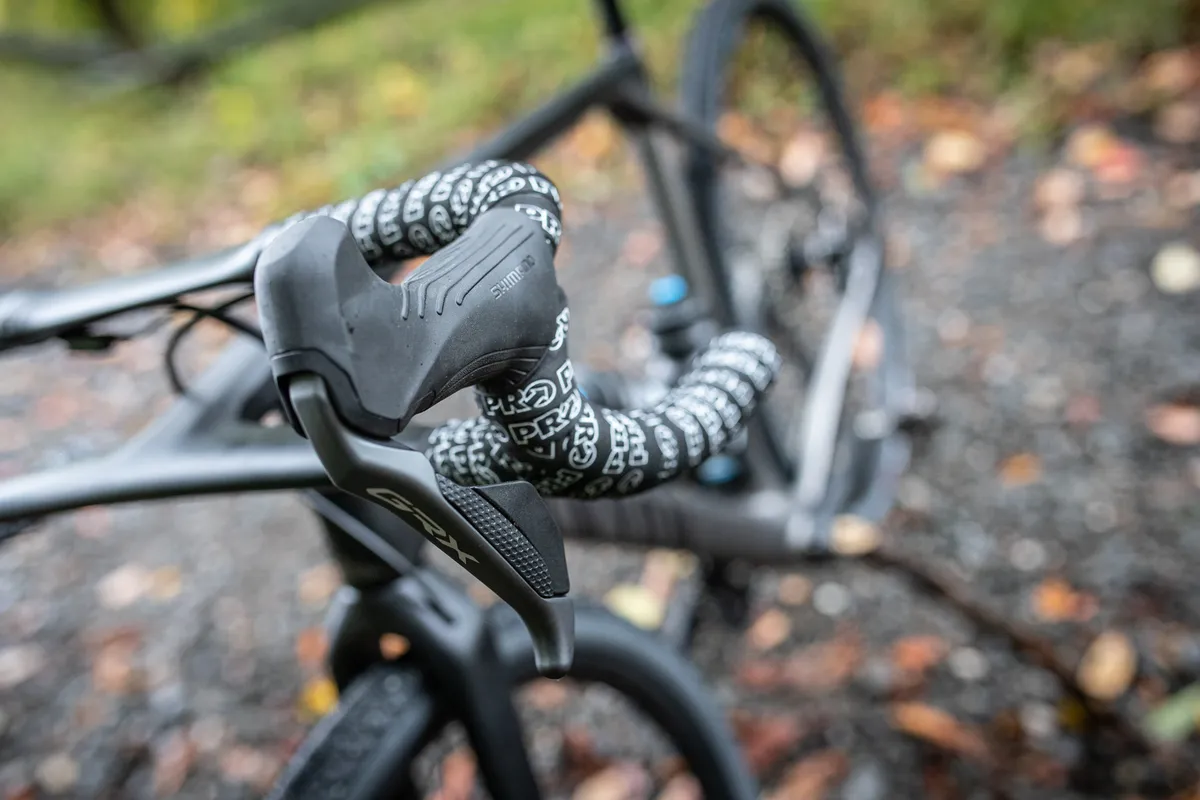
I’m pleased to see SRAM looks to be sticking to its eTap shifting logic for the main shifter paddles (which sit behind the brake levers), though.
The simplicity of this – one button each for shifting up or down the cassette, while pressing both together initiates a front shift (assuming you’re running a 2x and not a 1x drivetrain) – has always been one of the best features on SRAM’s electronic road groupsets.
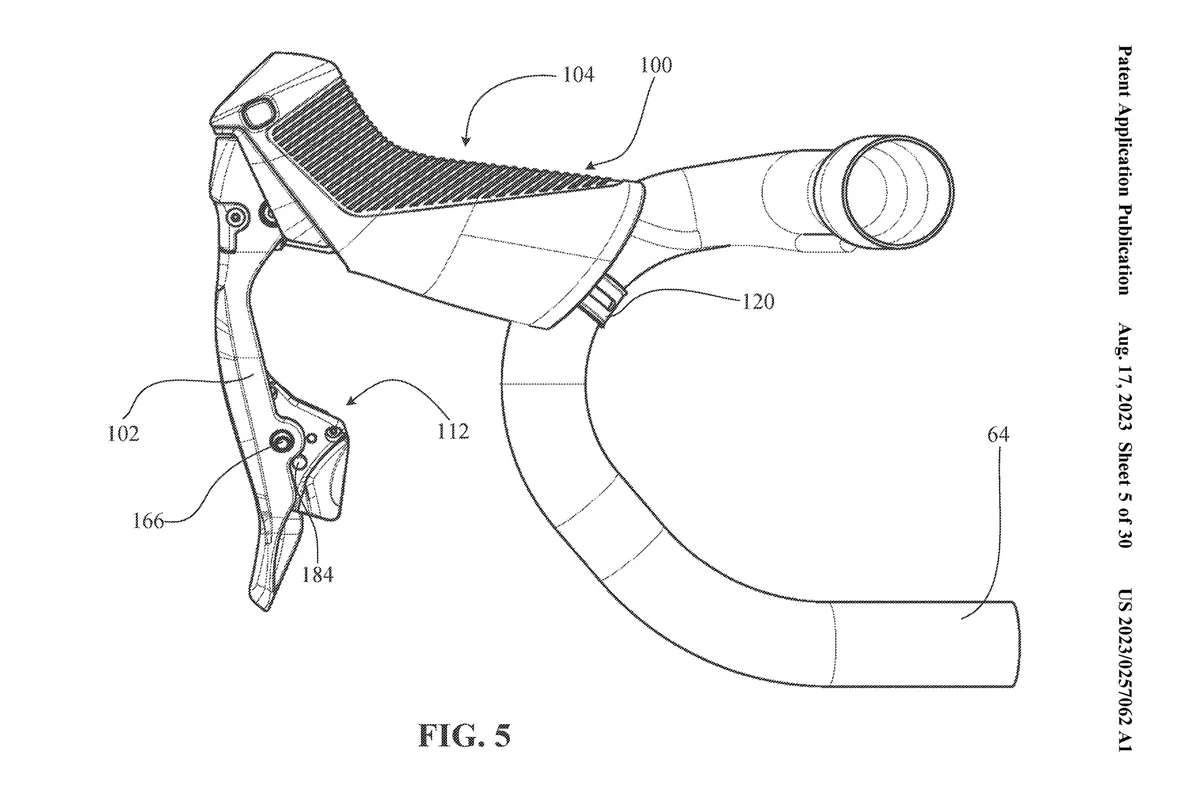
SRAM does appear to have added an additional button on the inside of each shifter hood, though – similar to how Shimano Di2 shifters have an auxiliary button on top of the hoods.
Hopefully, these buttons will be programmable, enabling riders perform actions such as swapping pages on a bike computer or shifting from an alternative hand position.
Improved front shifting
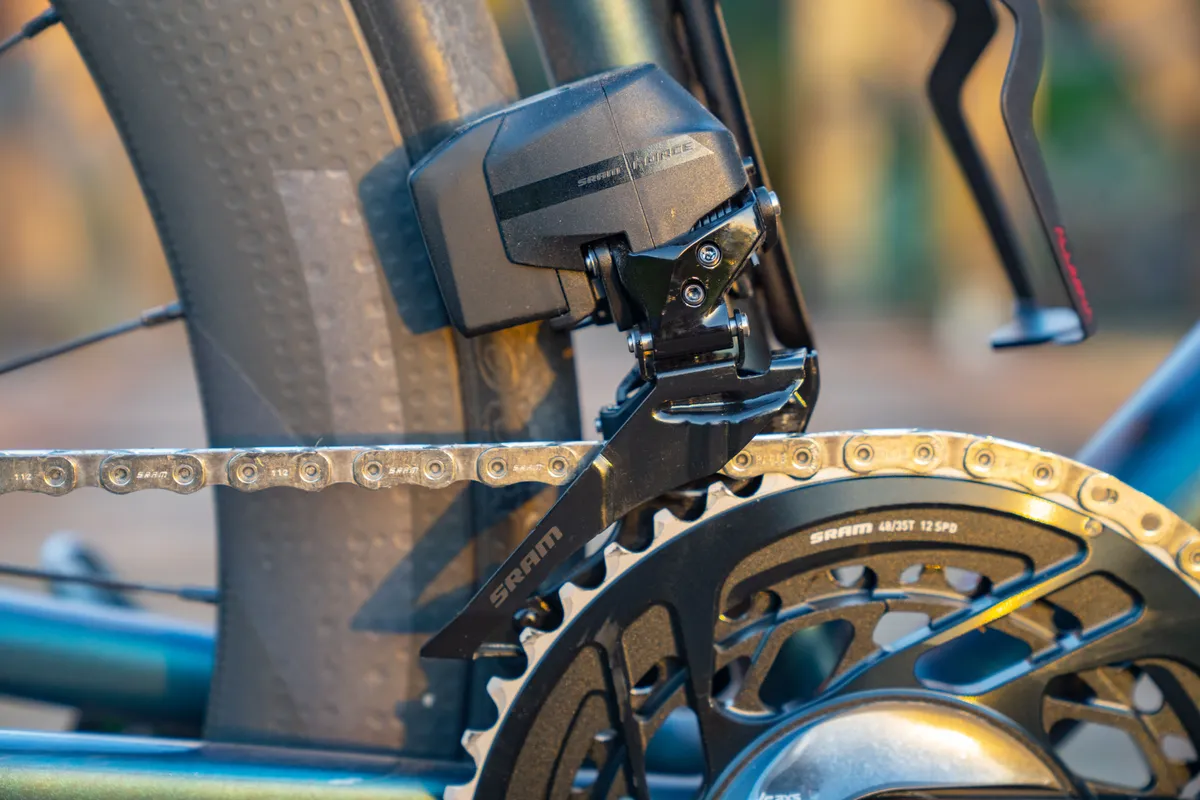
If there’s one area Shimano Di2 has unquestionably dominated in recent years, it’s front shifting.
SRAM Red’s current front shifting is good, but it doesn’t quite have the same ferocity on upshifts as Shimano Di2.
With its recently updated Force AXS groupset, SRAM revised the front derailleur design to help speed up shifting slightly.
According to those at BikeRadar who’ve tested it, the improvements are tangible and, naturally, I’d like to see these changes implemented on a new Red AXS groupset too.
A smaller front derailleur

Beyond improvements to shifting performance, though, I’d also like to see SRAM make the front derailleur smaller, if possible.
As things stand, SRAM’s relatively bulky electronic front derailleurs lack the visual elegance of their bijou Shimano counterparts.
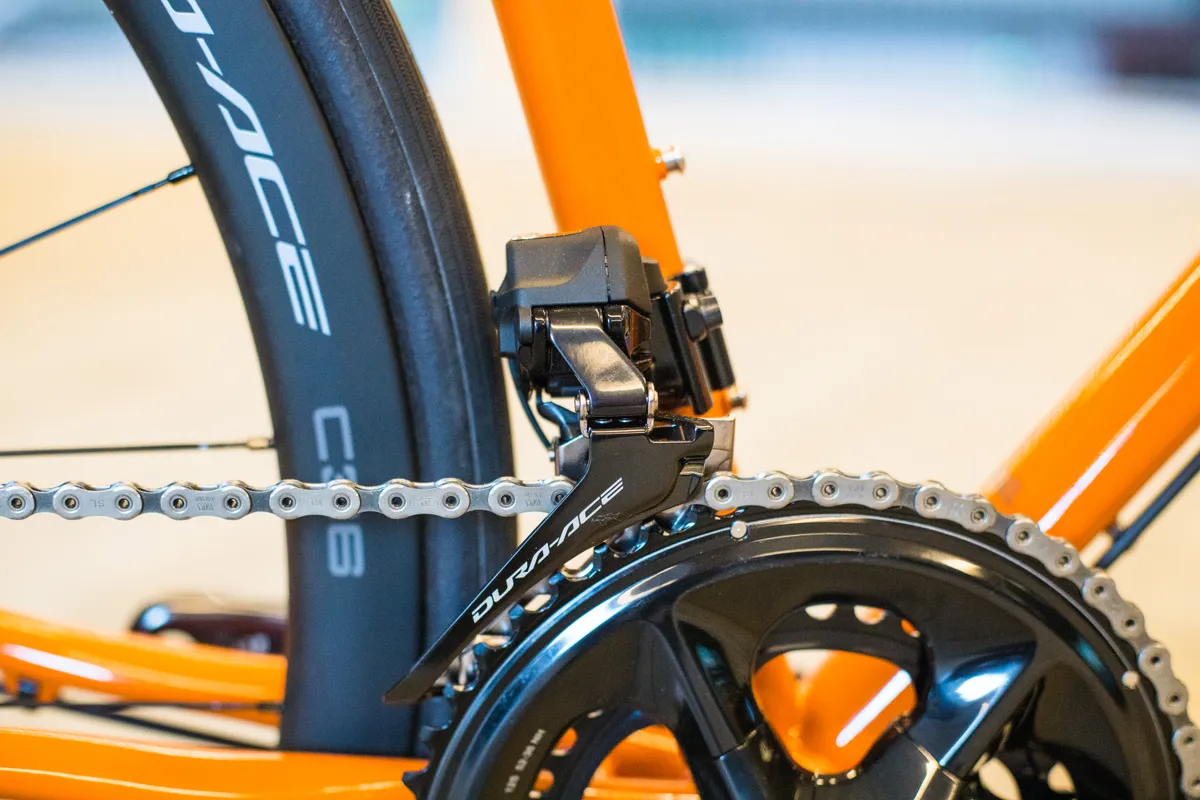
This is partly due to their wireless design and the requirement for a separate battery to be attached to each derailleur in the system (as opposed to sequestered away within the frame, as with Shimano Di2 or Campagnolo’s previous EPS electronic groupsets).
Campagnolo’s new Super Record Wireless suffers a similar issue.
Perhaps SRAM can develop its battery technology to reduce the size of the AXS batteries without reducing their lifespan, while refining the derailleur body itself.
No more integrated chainrings

SRAM first introduced integrated chainrings with Red eTap AXS and it has since trickled down to Force AXS.
Machined from a single piece of aluminium, they also integrate a direct-mount interface for SRAM’s range of aluminium and carbon cranksets.
The design admittedly looks fantastic – especially at the Red level, where the mix of matt black and polished aluminium reminds me of Shimano’s classic Dura-Ace R9000 groupset – and SRAM says the design improves chainring stiffness (and therefore front shifting).
I have serious qualms about it, though.
Firstly, it feels very wasteful to need to dispose of the whole unit when one of the chainrings inevitably wears out.
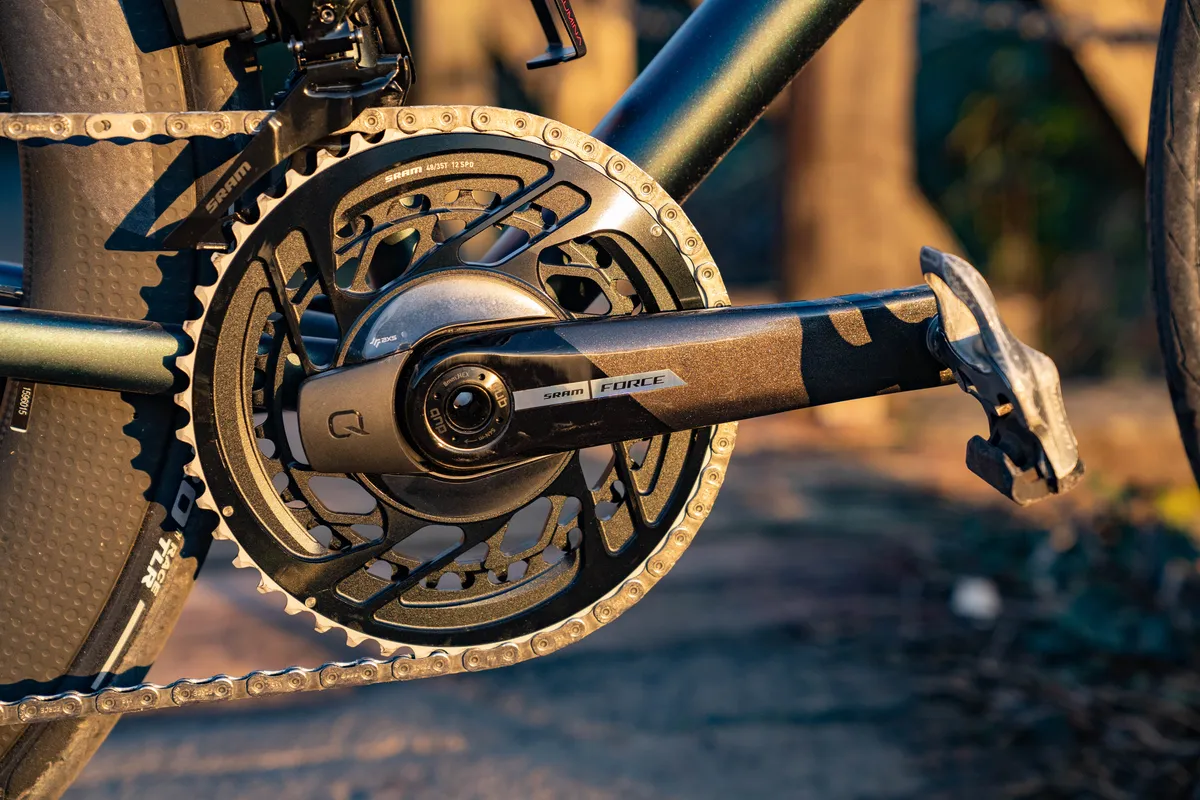
Of course, if you keep your drivetrain fastidiously clean and run a high-quality chain lubricant, it may be possible to get many thousands of kilometres out of a set.
But it’s also fair to say not everyone wants to wax their chains or clean their bike after every ride.
In any case, the smaller chainring in a 2x setup typically wears at a faster rate than the larger one, in my experience.
But instead of being able to swap in a relatively cheap replacement inner chainring if this happens, you’re forced to purchase a whole new set at much greater expense.
This problem is compounded if you opt for SRAM’s Red AXS power meter.
Unlike with most power meter spiders, the chainrings are integrated directly into the spider itself (as opposed to bolted on), with no way for a rider to separate them.
When either of the chainrings wears out, the power meter essentially becomes junk too.
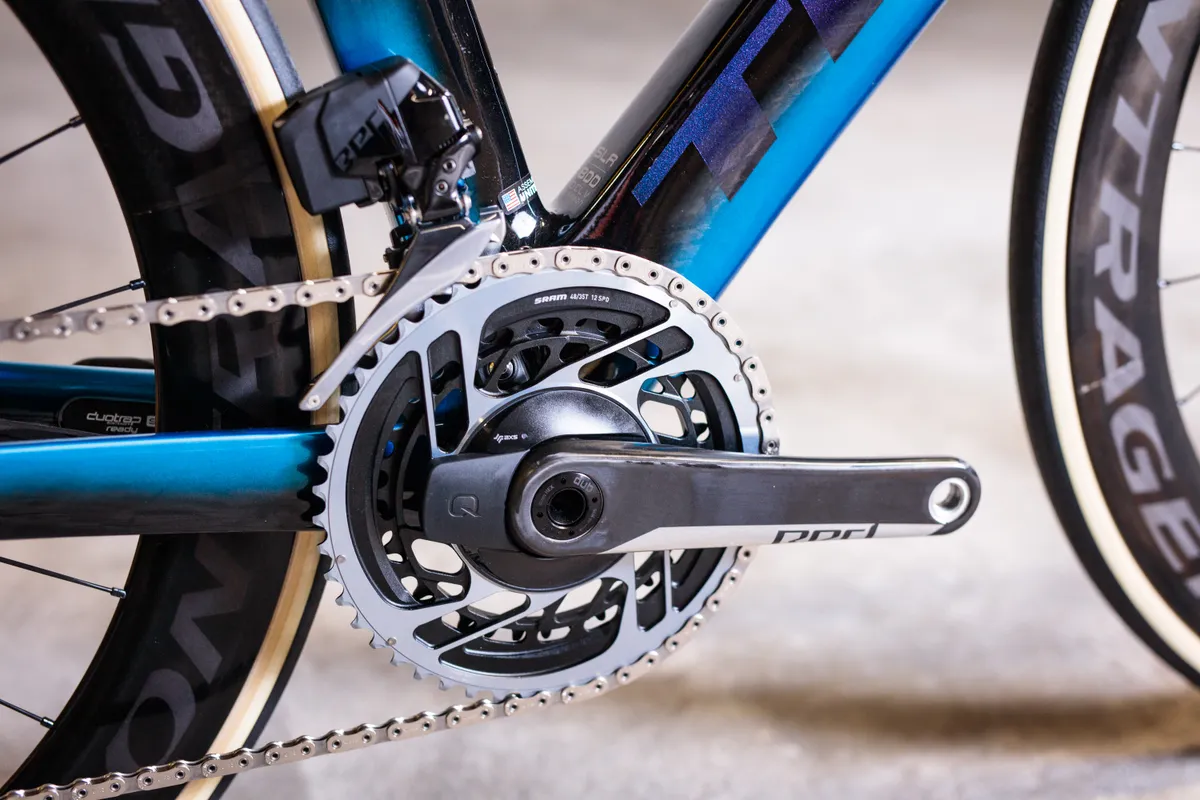
SRAM does have a trade-in programme for replacing and recycling these power meters when the chainrings wear out.
However, the rider is only offered a 50 per cent discount off the price of a new Red AXS power meter and chainrings unit, and there’s no option to choose a different combination of chainring sizes at this point (you can only get a like-for-like replacement).
With prices ranging from €894 to €1,440 (depending on what chainring sizes you need) for a non-discounted replacement, it’s always going to be far more expensive than simply being able to replace a single chainring.
The integrated design also means riders aren’t free to swap chainring sizes on demand, to customise their gear ratios to suit different rides or preferences.
In contrast, with Shimano drivetrains, I’ve often changed my gear ratios or used non-standard front chainring combinations such as 53/36t, or even 53/34t, when heading to mountainous regions for short periods.
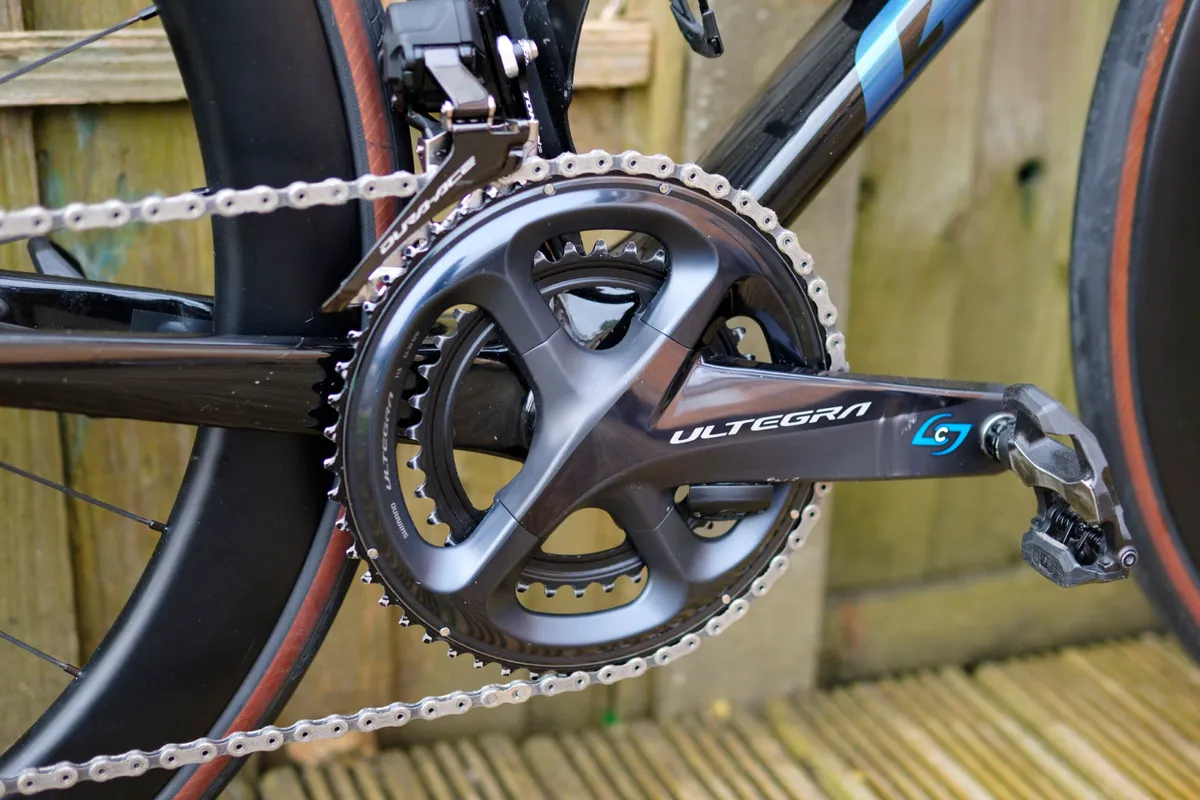
At the other end of the spectrum, my Planet X Exocet 2 time trial bike is currently equipped with a Shimano Ultegra R8000 crankset and Rotor 56/42t chainrings.
While these all fall outside of Shimano’s officially recommended combinations, I’ve found they work fine and can be very useful for getting easier climbing gears or bigger gears for a time trial bike, for example, without needing to spend a fortune.
No more 10t cassette cogs
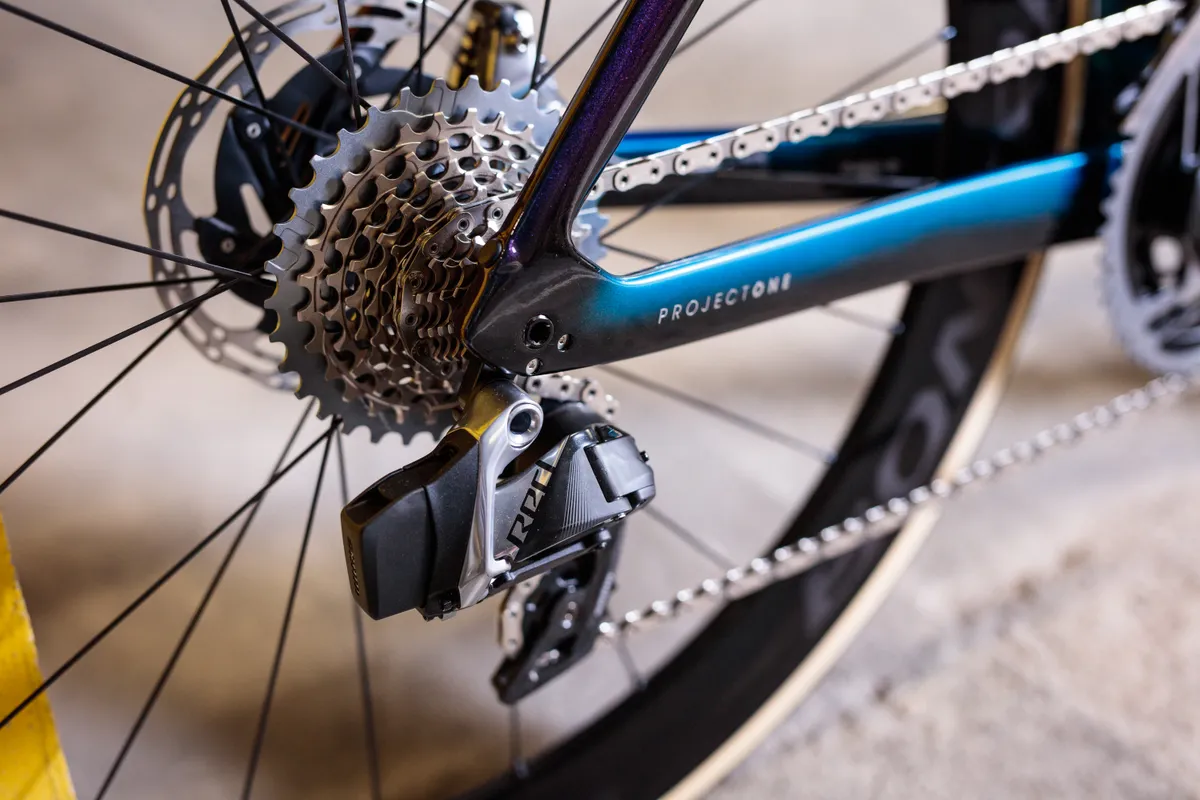
While we’re on drivetrain specifics, I’d love to see SRAM revert back to an 11t smallest sprocket on its 12-speed road cassettes.
It’s true that with a 10t cassette sprocket, you can have smaller, slightly lighter chainrings without sacrificing a top end gear ratio.
Any performance you gain from cutting a few grams is likely to be lost in increased drivetrain friction, though, as (all else being equal) smaller cogs and chainrings tend to be less efficient than larger ones.
In counter to this complaint, I often hear the argument “No one ever uses the 10t cog, though, so why does it matter if it’s slightly less efficient?”. But if no one’s using it, why bother having it?
The same argument could be made about 11 vs 12t cogs too (and so on), of course, and that’s absolutely right. I wouldn’t mind if road bike cassettes started at 12t.
That’s a topic for another day, though.

Having a 10t cog also necessitates the use of a different freehub standard (XDR), compared to the HG freehubs many road bike wheelsets and direct drive smart trainers are typically specced with.
When its mechanical Apex groupset was updated last year, SRAM even noted “A HG-compatible cassette is much cheaper to produce than an XDR-compatible one”, so this could also help keep costs down.
At a time when sky-high bike prices are at the forefront of everyone’s mind, who wouldn’t welcome that?
A return to ‘standard’ chain roller sizes
One quirk of the AXS road groupsets is their use of SRAM’s Flattop chain and its slightly larger-than-usual rollers.
This seems innocuous at a glance – all groupset brands produce their own chains and recommend you only use those for optimal performance, after all – but it has wider implications.
Because of this, the tooth profiles on SRAM AXS road cassettes and chainrings are different from those of 12-speed components from most other brands, rendering many third-party options incompatible (unless they’re designed specifically for use with AXS road drivetrains).
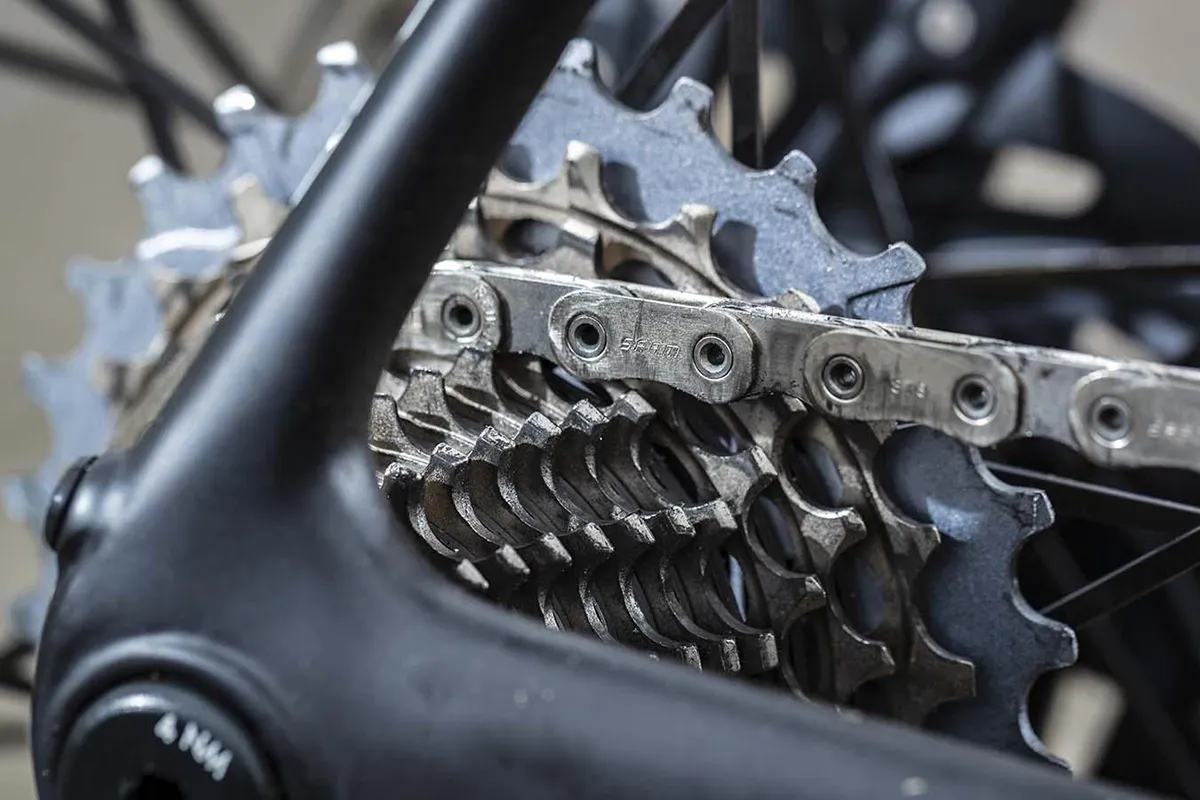
You can’t, for example, swap in a 12-speed cassette or set of chainrings from any other brand – the Flattop chains simply won’t mesh with them properly.
Likewise, you can’t swap in a 12-speed chain from another brand because it won’t play nicely with the SRAM AXS road cassette or chainrings.
Unlike Shimano – which uses a single 12-speed chain design across all of its road, gravel and mountain bike groupsets – SRAM also has three different 12-speed chain standards (Flattop road, T-Type Eagle Flattop and Eagle), none of which is cross-compatible.
As a result, the associated drivetrain components for these three chains are also incompatible with each other.

SRAM would doubtless argue that matching its own components to each other in this manner ensures riders always get optimum performance from each groupset.
But it also reduces the scope for customising your bike to better suit your riding style or preferences.
There are a few third-party brands (Rotor being one) making chainrings for SRAM AXS road groupsets nowadays, but riders have far less choice than in SRAM’s pre-AXS days.
Of course, intercompatibility among different bike and component manufacturers has always been a thorny issue, and SRAM certainly isn’t the only brand employing proprietary standards.
However, for keen fettlers such as myself, the relatively closed AXS ecosystem makes it less attractive.
Quieter wet-weather braking

With its latest 12-speed groupsets, Shimano made a number of steps forward with its hydraulic disc braking systems for road bikes.
While there was much talk about the 10 per cent greater pad clearance and the addition of Servo Wave technology from its mountain bike disc brakes, I felt the biggest gains came from swapping to Shimano’s latest RT-CL900 rotors.
With these, brake rubbing, heat management and noise levels are all tangibly improved. All of which makes a big difference to the experience of using them on a road bike, especially in wet weather.
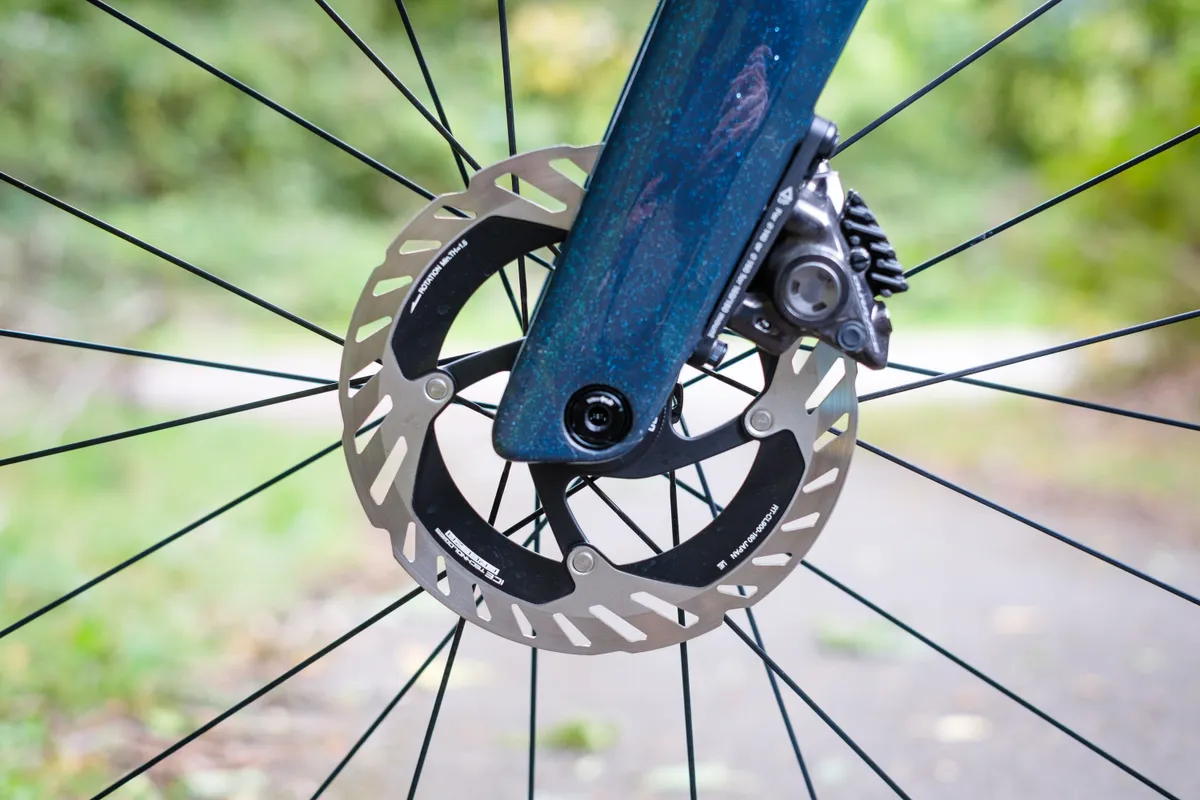
While SRAM’s hydraulic disc brakes are excellent in terms of slowing you down, many at BikeRadar have found its current range of CenterLine road disc rotors can be fairly noisy when wet or mucky.
Happily, SRAM may already have the solution to this in hand.
According to many of the flat bar shredders at BikeRadar, such as Tom Marvin and Tom Law, SRAM’s mountain-bike specific HS2 rotors make a noticeable difference in this regard.
These rotors are also said to improve braking power and heat management.
Tom (Law) is, in fact, so enamoured with these rotors that he selected them as one of his Gear of the Year picks for 2023.
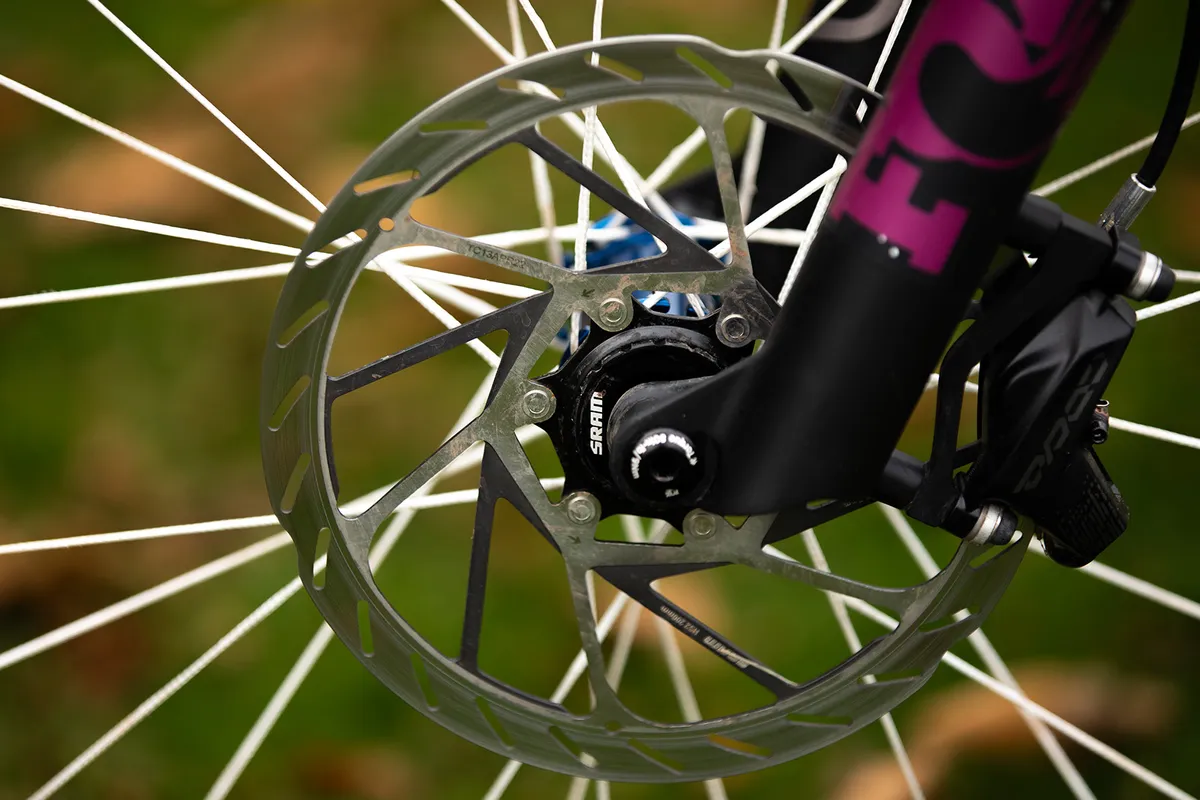
Given this, I’d love SRAM to sprinkle some of this magic on the new Red AXS brake calipers and rotors.
Like the Shimano RT-CL900 rotors, the HS2 rotors are a little heavier and beefier than its standard, CenterLine road disc rotors. According to SRAM, the HS2 rotors are 2mm-thick, instead of 1.85mm-thick like its road and gravel options.
To accommodate the thicker rotors, SRAM’s new Red AXS brake calipers may need a small increase in pad clearance to prevent rubbing, then.
But for the price of a few extra grams, who wouldn’t want quieter, more powerful and more consistent braking?
